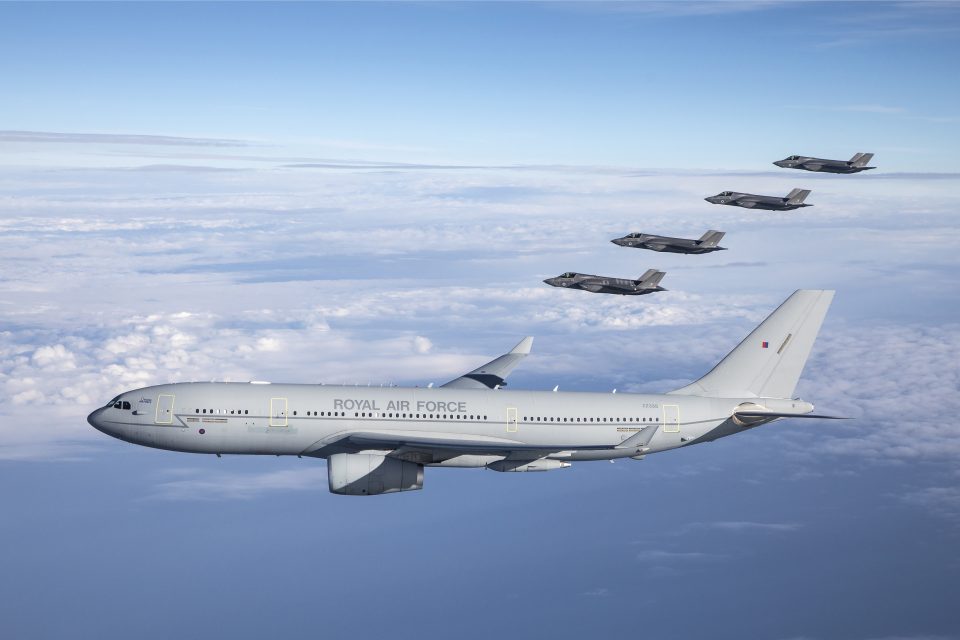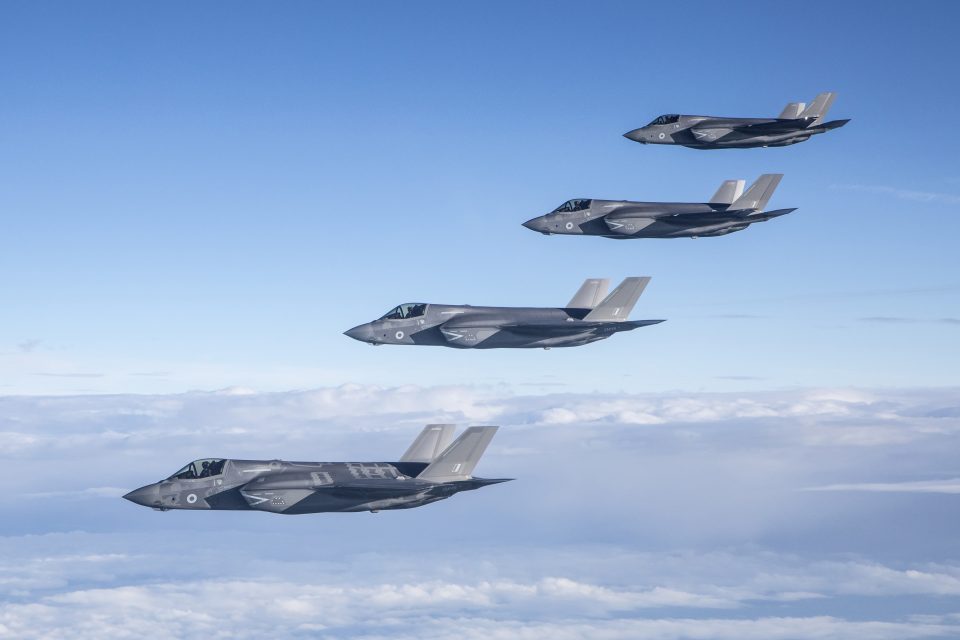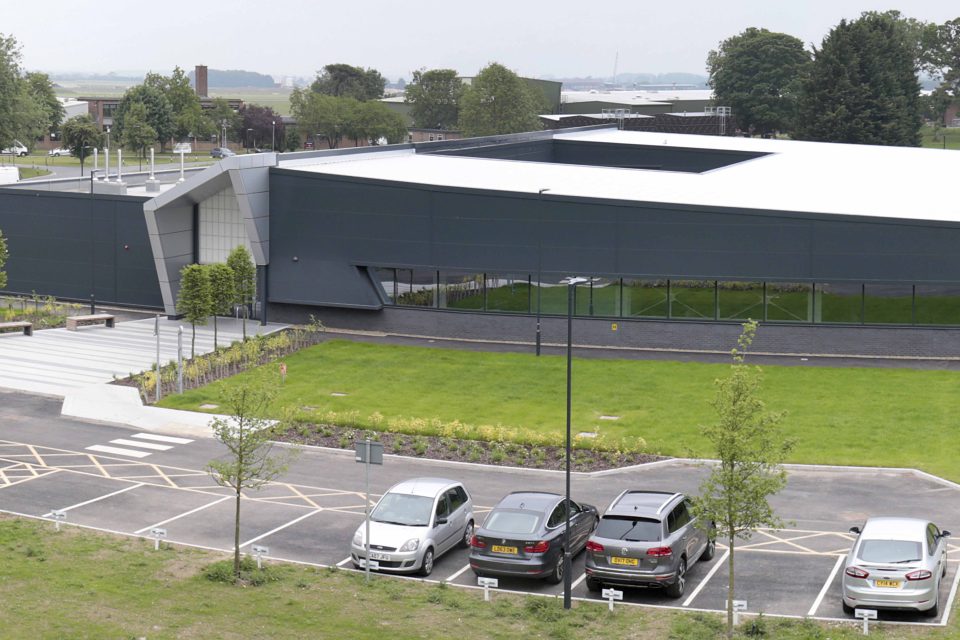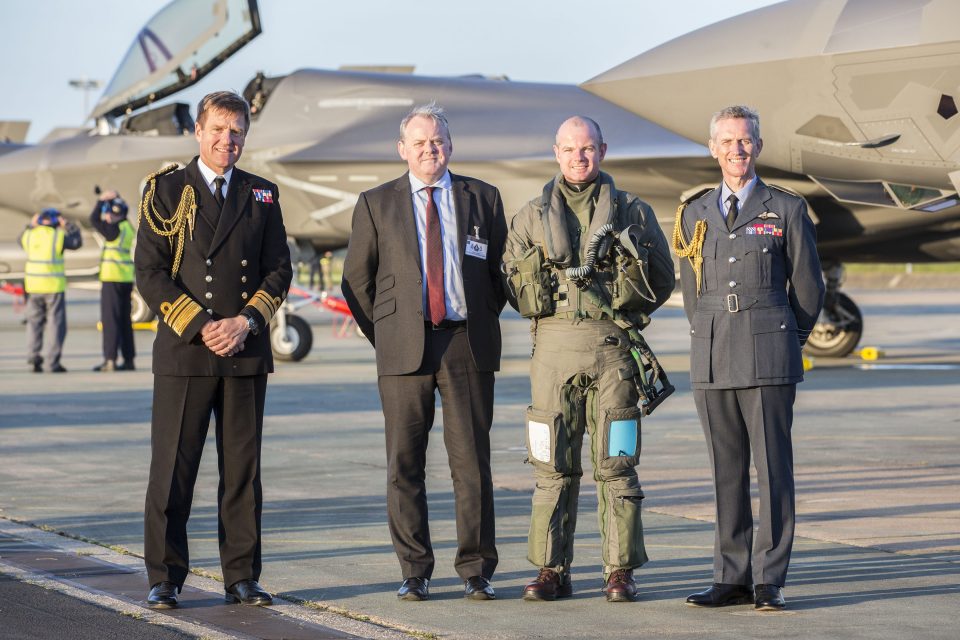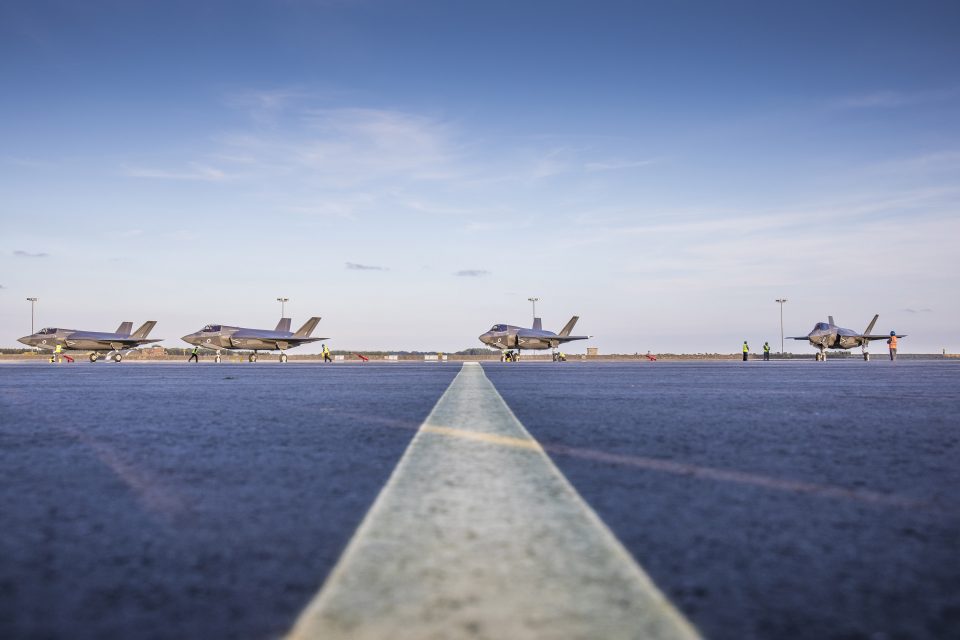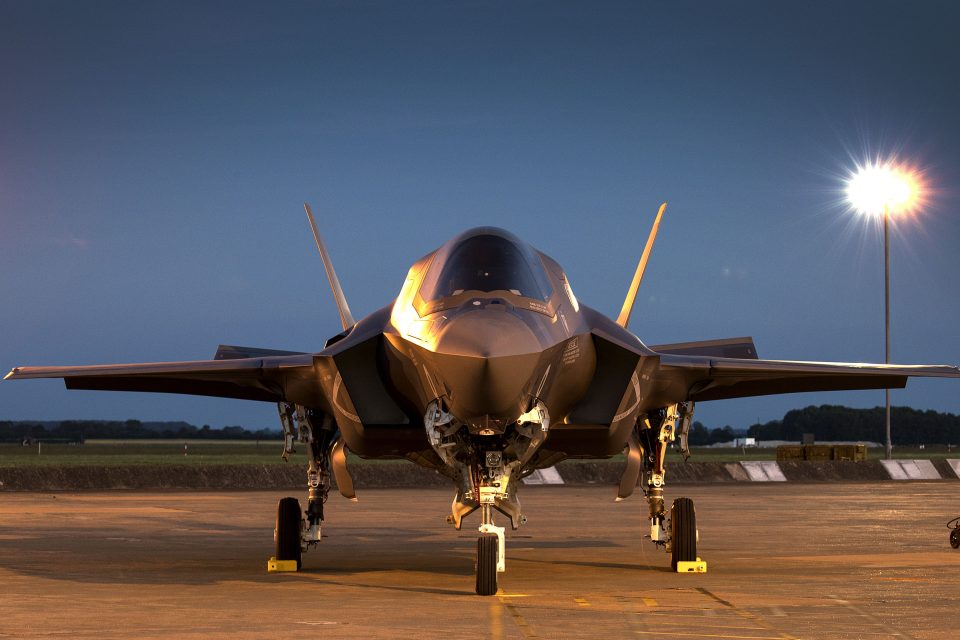By Robbin Laird
During my visit to RAF Marham in May 2018, I had a chance to visit once again and to meet with senior RAF and Royal Navy personnel responsible for the standup of F-35 capability on UK soil.
MoD is building new facilities to support the jet, and as the newly activated Dambusters squadron arrived on June 6, 2018 to RAF Marham, thus opening the F-35 era operating from British soil.
But the leadership team for the Lightning Force is not narrowly focused on this event, although clearly prioritizing it.
There focus is for the longer term, on how to support the new air system, how to leverage the air system as part of a multi-domain transformation of the UK forces and how to work with allies to get the best combat coalition advantage out of the aircraft as a coalition asset as well.
This is clearly a work in progress but one, which will shape the future of combat airpower in the UK for sure.
The government has announced a new combat air strategy, which is to look to the future of air combat power and the role of UK industry in that effort.
But no strategy will be effective without taking into account the impact of the F-35 on the evolution of air combat power itself.
Because the F-35 is first to operate from the Queen Elizabeth carriers, the joint experience of operating an RAF and Royal Navy asset off of a ship will be part of the transformation as well.
How will that joint experience and operating from a mobile airbase affect the thinking about the new air combat strategy?
How will it affect the way ahead for the UK forces more generally?
I had a chance to talk with the Deputy Commander of the Lightning Force, Captain Adam Clink, during my visit to RAF Marham and to discuss the challenges of shaping the way ahead for the Lightning Force both as a national force and as a coalition force.
The UK initially is buying the F-35B for its carrier operations.
As such, the RAF and the Royal Navy are working closely together in operating the aircraft and thinking through concepts of operations for the aircraft operating aboard the new carrier and how that air system will operate not only at sea but also with other air and multi-domain assets.
The advantage of starting with the F-35 as an aircraft operating from the sea base is that one has to think expeditionary from the outset and think multi-domain at the outset, and clearly the F-35 is a multi-domain asset and forcing function flying combat system pushing the C2 and information envelope.
One challenge, which the air system poses from the outset, is that of information sharing within the national and coalition force.
Captain Clink underscored that “we want to ensure that the F-35 is a force multiplier not a force inhibitor and to do that we need to work through how information is shared and decisions made based on that information.
“This is a work in progress and important for the coalition efforts for sure as well.”
As the RAF was upgrading its Typhoons and the RN and RAF were bringing the F-35 into the force, the two services were working closely together.
As they stand up the F-35Bs onboard the Queen Elizabeth, Captain Clink saw this is a strategic opportunity to shape multi-domain joint operational culture and thinking.
But he looked beyond the acquisition of the initial F-35Bs for carrier operations, and what comes next and how that would impact on the transition.
The UK will buy a new tranche of aircraft post 2020, and how would this acquisition affect Royal Navy and Royal Air joint perspectives?
The coming of the F-35B to the Royal Air Force and Royal Navy is far more than simply bringing a new combat aircraft to the force, but can drive some of the same kind of joint thinking and joint operational approaches which the Harrier brought in the past.
The difference now is that the F-35 is a very different combat aircraft and can drive significant multi-domain capabilities and innovations within the RAF and the Royal Navy as well.
The challenge will be to sort out how best to leverage its introduction and standup as the two services work jointly to support the Carrier and operations from RAF Marham.
There are allies who are also operating the F-35B of course.
Notably, the Marines have mobile basing in their DNA and as the USAF is rediscovering the importance of mobile basing the USAF is visiting the Marines and taking lessons from how best to support an F-35 expeditionary force.
The challenge was well articulated by the head of the 11th Air Force during a seminar in Canberra held by the Williams Foundation this past March:
“From the US Air Force standpoint, we are organized for efficiency, and in the high intensity conflict that we might find ourselves in, in the Pacific, that efficiency might be actually our Achilles heel, because it requires us to put massive amounts of equipment on a few bases.
“Those bases, as we most know, are within the weapons engagement zone of potential adversaries.
“So the United States Air Force, along with the Australian Air Force, has been working on a concept called, Agile Combat Employment, which seeks to disperse the force, and make it difficult for the enemy to know where are you at, when are you going to be there, and how long are you going to be there.
“We’re at the very preliminary stages of being able to do this but the organization is part of the problem for us, because we are very used to, over the last several decades, of being in very large bases, very large organizations, and we stove pipe the various career fields, and one commander is not in charge of the force that you need to disperse. We’re taking a look at this, of how we might reorganize, to be able to employ this concept in the Pacific, and other places.”
The USAF is not alone in dealing with this challenge and it is clear that bringing the F-35Bs first into the Royal Air Force and working with the USMC can drive a similar learning process with regard to mobile or expeditionary basing.
And it is clear that working the joint perspective with the Royal Navy is a significant strategic opportunity to shape a very different Royal Air Force approach as well to mobile basing in the period ahead as well.
The Italians are also operating F-35Bs and the RAF/RN are working with the Italians as well as they bring the F-35B capability to the Italian carrier as well.
Another key challenge facing the way ahead with a F-35 enabled force is working through the software upgrade challenges. When one visits the Typhoon squadrons, the different Tranches of the aircraft pose a management problem; different software variants of the F-35 will as well.
Captain Clink underscored the importance of ensuring as much software commonality among the deployed aircraft as possible as well as working to ensure that the software in the simulators was in advance of putting new software blocks onto the operational aircraft themselves.
This clearly is a work in progress, but one which will be crucial to leveraging the evolving capabilities of the new air system.
There is also the challenge of working through joint security rules for handling the facilities and the data generated by the aircraft.
This too is a work in progress as the US works with the partners to sort through more effective working relationships to ensure that the partners get full benefit from the program and the flexibility they clearly will need and can expect to obtain from operating the new air system.
There are cultural challenges as well.
Captain Clink noted that the RAF and Royal Navy have never operated a low observable aircraft before so there are learning challenges as well with regard to the sustainment and operations of an LO aircraft.
The UK faces as does the US a pilot shortage and that will affect the transition as well for there are not going to be surplus fifth generation operators around to influence the broader transformation as rapidly as one might hope for.
This clearly has been the case with the USAF as the ending of the F-22 program had the effect as well of creating a much smaller cadre of fifth generation operators and this has had a significant follow on impact on innovation with the USAF as a whole.
In short, the arrival of the Dambusters is a significant beginning; but just that a beginning.
But the coming of the F-35 is lever for change throughout the force and if the Royal Air Force and Royal Navy joint partnership is fully leveraged it can lead to significant innovation in 21st century multi-domain operational capabilities throughout the combat force.
The featured photo shows (from left) Captain Adam Clink, Air Commodore David Bradshaw and Group Captain Cab Townsend. Picture: Ian Burt



